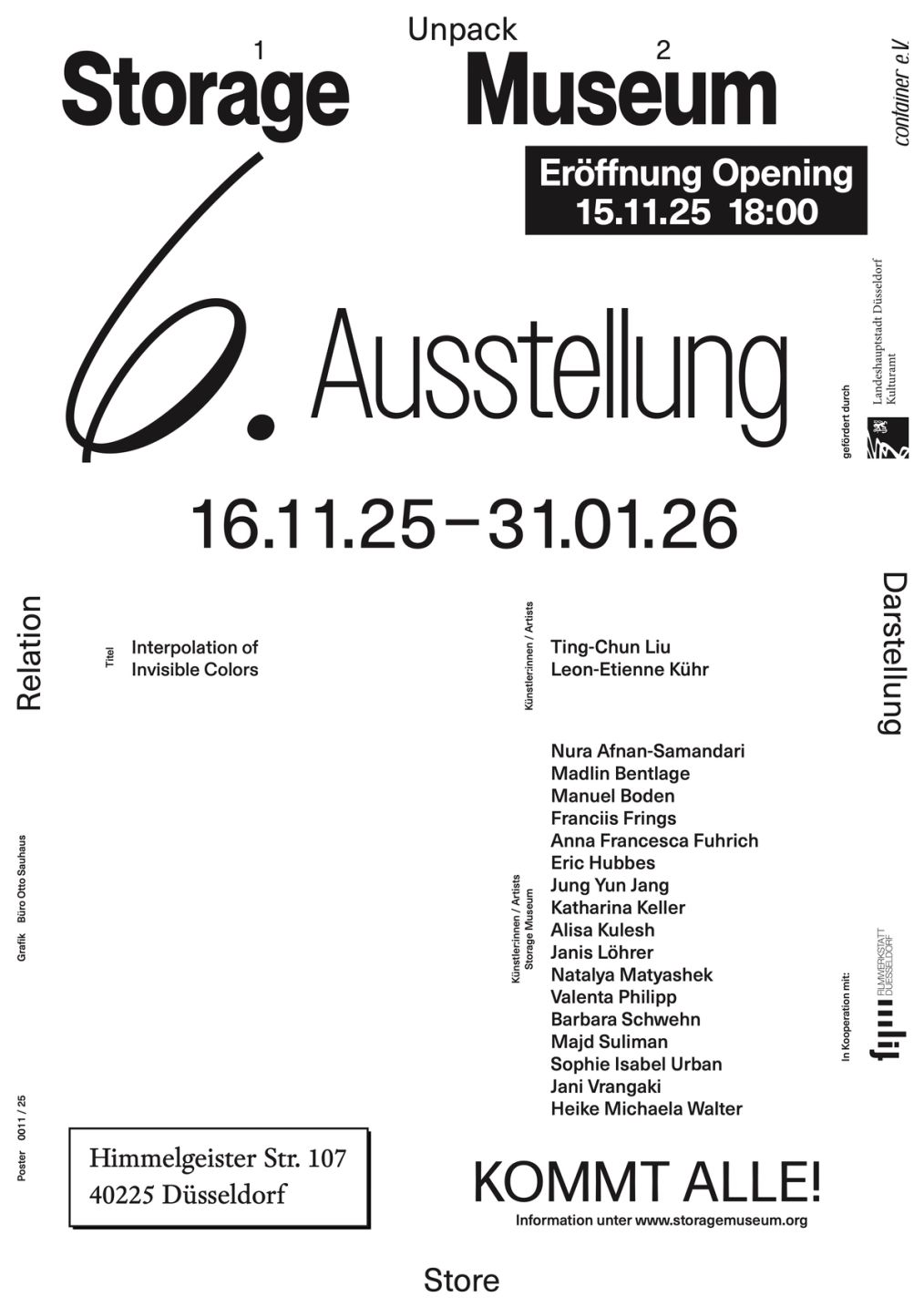Format
Title
Period
For the exhibition Interpolation of invisible Colors, media artists Ting-Chun Liu and Leon-Etienne Kühr take the inventory of the Storage Museum as their starting point and examine two forms of mapping: In physical storage, works are “compressed” by spatial order, material constraints, and human labor. In contrast, the latent space of generative AI models compresses the same holdings into high-dimensional vector spaces, where metadata condenses patterns and relationships that a human viewer may not perceive. The juxtaposition of these physical and computational orders raises the question of what understanding of the world machines form from purely digital representations. What hierarchies and relationships between things arise from the mere comparison, ordering, and organization of their signs? Leon-Etienne Kühr works as a computer scientist and media artist using methods of information visualization, data science, and artificial intelligence. In his practice, he investigates the mechanisms of AI-driven automation and the phenomena of the increasingly intertwined relationship between the world and its digital representation in generative AI. He is a research assistant and co-director of the AI Lab at Offenbach University of Art and Design and previously studied media arts at KHM Cologne and media informatics at Bauhaus University Weimar.
Ting-Chun Liu works with audio-visual media, network practices, and AI. He investigates feedback mechanisms in generative image and sound processes to reflect the collective unconscious and the unattainable “ideal” perspective in AI-generated image representations. He works as an artistic assistant at the Bauhaus University Weimar and previously studied media arts at the KHM Cologne and new media art at the TNUA Taipei.
